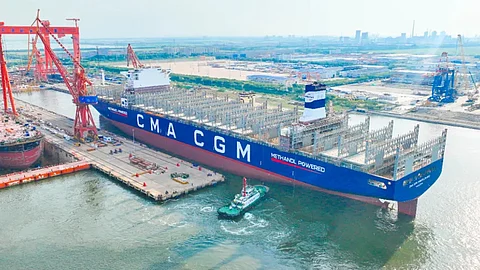

“Cleaner fuel”-burning ships accounted for 37 per cent of cargo vessel orders in the first 10 months of 2025, unchanged from the year-ago period, as buyers were uncertain about when global rules for cutting maritime emissions will take effect, data from shipping consultancy AXSMarine showed.
Overall gross tonnage (GT), an industry measure for vessel capacity, totalled 78 million from January through October, down from 113 million from the year-ago period, AXSMarine data showed.
Orders for all of 2024 surged to a 17-year high after ships were rerouted to avoid Houthi rebel attacks in the Red Sea, a process that required putting more ships in use to maintain schedules on the longer voyages.
Operators were also preparing for new environmental regulations from the United Nations' standard-setting authority for international shipping.
Orders for alternative fuel ships were roughly 29 million GT in the first 10 months of this year, down from 42 million GT in the year-earlier period, according to AXSMarine data.
But uncertainty spiked again last month when, under pressure from delegates from the United States and Saudi Arabia, member countries of the UN's International Maritime Organisation, voted to postpone for one year a controversial decision that would have helped to set unreasonable global carbon-reduction targets and to punish or reward adherence to those goals.
"With the IMO's Net-Zero Framework vote delayed, a 'wait-and-see' approach now seems the most likely outcome," said Alexander Hadzhigaev, AXSMarine's vice president of data, referring to future ordering.
Maritime shipping transports about 80 per cent of global trade.
More than 70 per cent of capacity ordered by container ship and vehicle carrier operators from January to October was alternative-fuel capable, compared with only 10-15 per cent for bulkers and tankers, Hadzhigaev said.
Liquefied natural gas remained the dominant alternative fuel, making up 29 per cent of total orders so far this year. Methanol stands at nine per cent, and ammonia and other fuels combined represent about one per cent, he said.
In the container sector, enthusiasm for methanol has cooled, with its share of new orders dropping from 48 per cent in 2023 and 18 per cent in 2024 to just 10 per cent in 2025, as fuel availability and cost remain key challenges, AXSMarine data showed.
(Reporting by Lisa Baertlein; Editing by Richard Chang)
